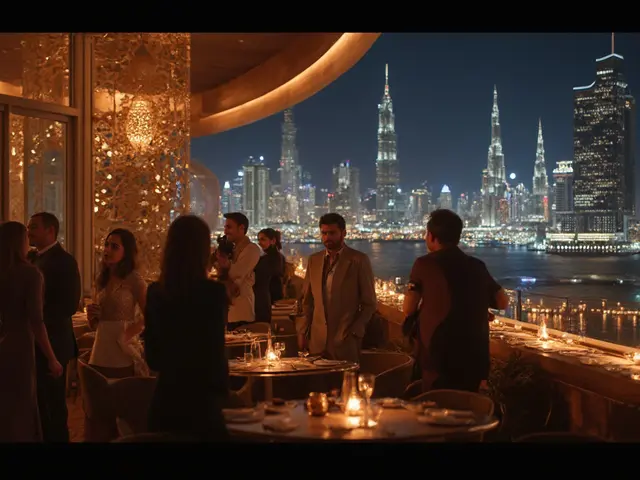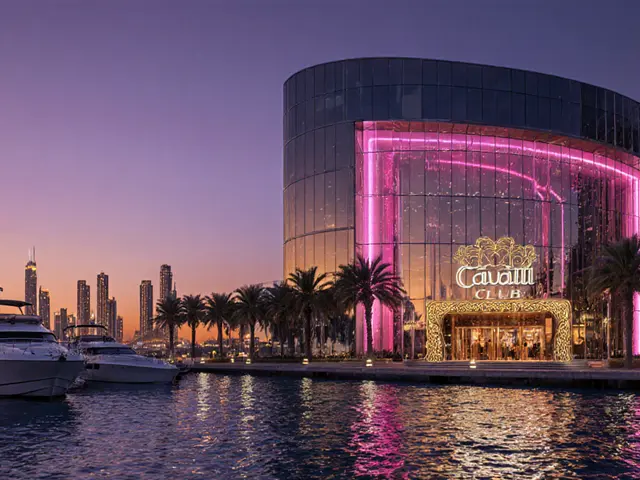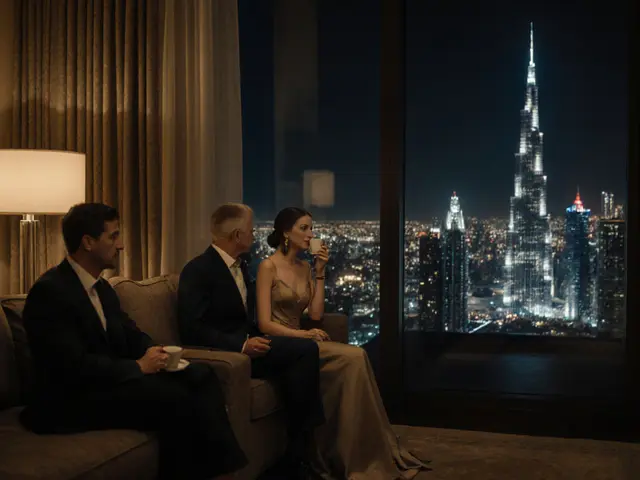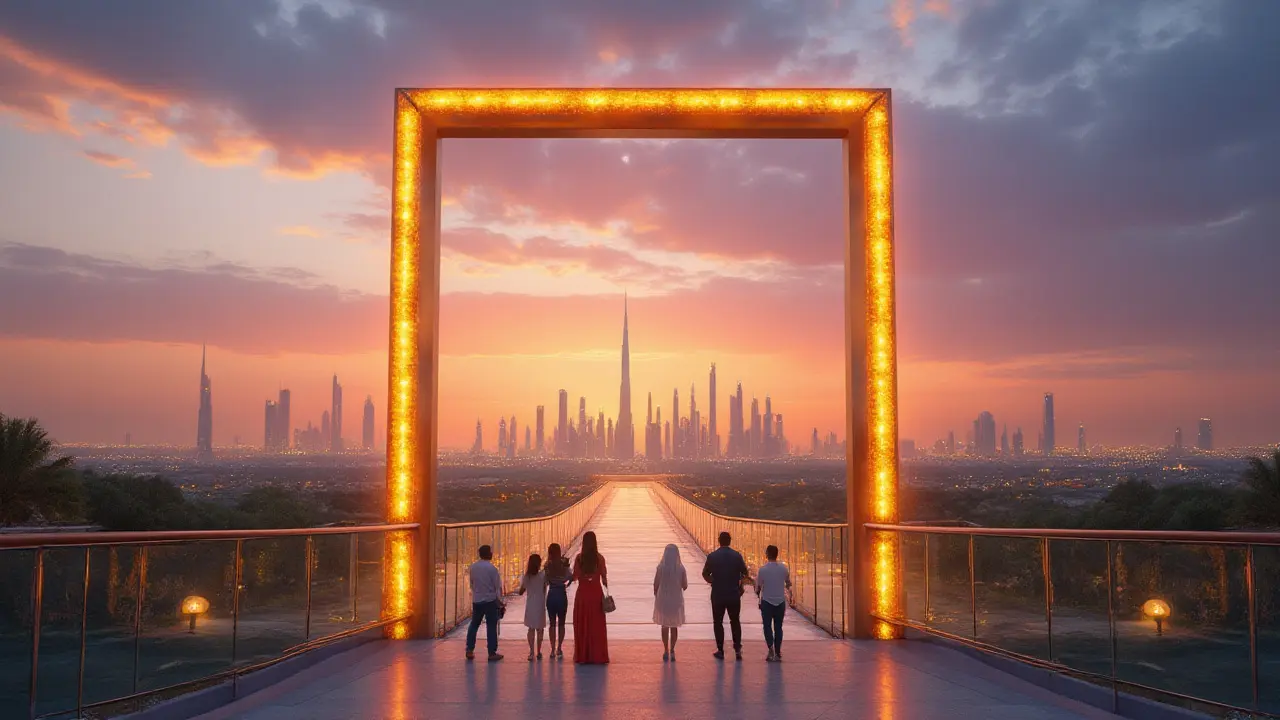
One glance at the shimmering skyline and you know you’re in Dubai. Right in the heart of this buzzing metropolis, a golden rectangle captures the city’s endless ambition: the Dubai Frame. It looks like a kind of time portal—positioned between Old Dubai and the glossy towers of the new city. People don’t just snap selfies here; they walk through history, pausing between tradition and glittering high-rise dreams. If you live in Dubai—or call it home for even a week—you can’t avoid its silhouette against the Arabian sky. But there’s a lot more to this city icon than the Instagram classics everyone’s seen.
The Story Behind the Dubai Frame: Bold Vision, Big Dreams
Dubai has never done small, and the Dubai Frame is no exception. It stands 150 meters high and 93 meters wide, with stunning views that stretch from the winding alleys of Karama to the winding highways snaking toward the Burj Khalifa. Designed by architect Fernando Donis, who won an international competition hosted by Dubai Municipality, the vision was simple yet epic—frame the contrast between the old and the new, all in one breathtaking view.
Construction kicked off in 2013, and by January 2018, the Frame opened its doors. It took 2,000 tons of steel and enough aluminum cladding to cover more than 15,000 square meters—literally the size of a small shopping center. Walk on the Sky Deck at the top, and you’re gliding over a glass bridge that lets you see straight down to Zabeel Park’s green lawns. The sensation is part thrill, part awe, kind of like riding The Storm coaster at Dubai Hills Mall for the first time. Local touches pop up everywhere: the lattice design in gold echoes the mashrabiya patterns you spot in old Emirati homes.
The Frame isn’t just a photo backdrop. Its two towers are living galleries. On the Mezzanine Level, the Past Gallery shows off the evolution from tiny fishing village to the glass-and-chrome megacity you see today. At the end of your journey, the Future Gallery wraps you in digital projections, hinting at flying taxis, green skyscrapers, and a city where innovation doesn’t sleep. The idea: Dubai isn’t done dreaming, and anyone looking at that panorama gets invited into the future, too.
Check out how the Dubai Frame compares to other famous local landmarks in this quick table.
| Landmark | Height | Year Opened | Tourist Visits (2023) |
|---|---|---|---|
| Dubai Frame | 150 m | 2018 | 2.2 million |
| Burj Khalifa | 828 m | 2010 | 2.4 million |
| Burj Al Arab | 321 m | 1999 | 500,000+ |
| Museum of the Future | 78 m | 2022 | 1 million |
Walking Through Time: Experience the Inside (and Tips You Didn’t Know)
So you scored a ticket and you’re making your way past Zabeel Park’s fountains—what should you expect when exploring inside? The main elevator zips you up to the Sky Deck in just 75 seconds, and as the doors open, the view will hit even jaded Dubai dwellers right in the gut. On one side: the skyscrapers of Sheikh Zayed Road, the glitz, the crazy traffic, the high-octane life. On the other: Old Dubai, with the dhow boats floating past Deira and the minarets of Bur Dubai peeking up.
Here’s a trick: the glass floor in the center of the deck is always crowded, but it’s worth braving the crowd for the gut-dropping sensation of standing “on air.” Early mornings (doors open at 9 a.m.) or weekdays see fewer crowds, and you might even catch some fog rolling in for that ethereal skyline shot. Summer hits different inside the Frame—air conditioned bliss—but you can also catch vibrant sunset views in the gentler winter months from November to March.
Families visiting have plenty to keep little ones busy. The Past Gallery is interactive and features models of the Dubai Creek, audiovisual displays, even the sound of gulls overhead. It’s accessible for strollers or wheelchairs, and there’s always a staff member handy if you need help. Pro tip for parents: just outside, Zabeel Park is home to bouncy castles, paddle boat rides, shaded playgrounds, and the Dubai Garden Glow in the cooler months. Many people plan a half-day trip, splitting time between Frame thrills and outdoor chill.
Want to take home a souvenir that isn’t in every shop window on Sheikh Mohammed bin Rashid Boulevard? The gift shop on the ground floor stocks quirky models, fridge magnets shaped like the Dubai Frame, and even jewelry that incorporates its iconic geometric latticework. Pay close attention to the Arabic calligraphy panels—they’re a subtle touch, celebrating local Emirati culture.
Here’s one thing out-of-towners might miss: the Frame really comes alive during UAE National Day in December and at special citywide festivals like Dubai Shopping Festival or Dubai 10X. The landmark gets lit up in dazzling colors, and special interactive displays often pop up, sometimes in collaboration with local artists. Last year, for example, a digital art show by Emirati designer Meera Al Qassimi projected moving patterns onto the bridge after sundown.
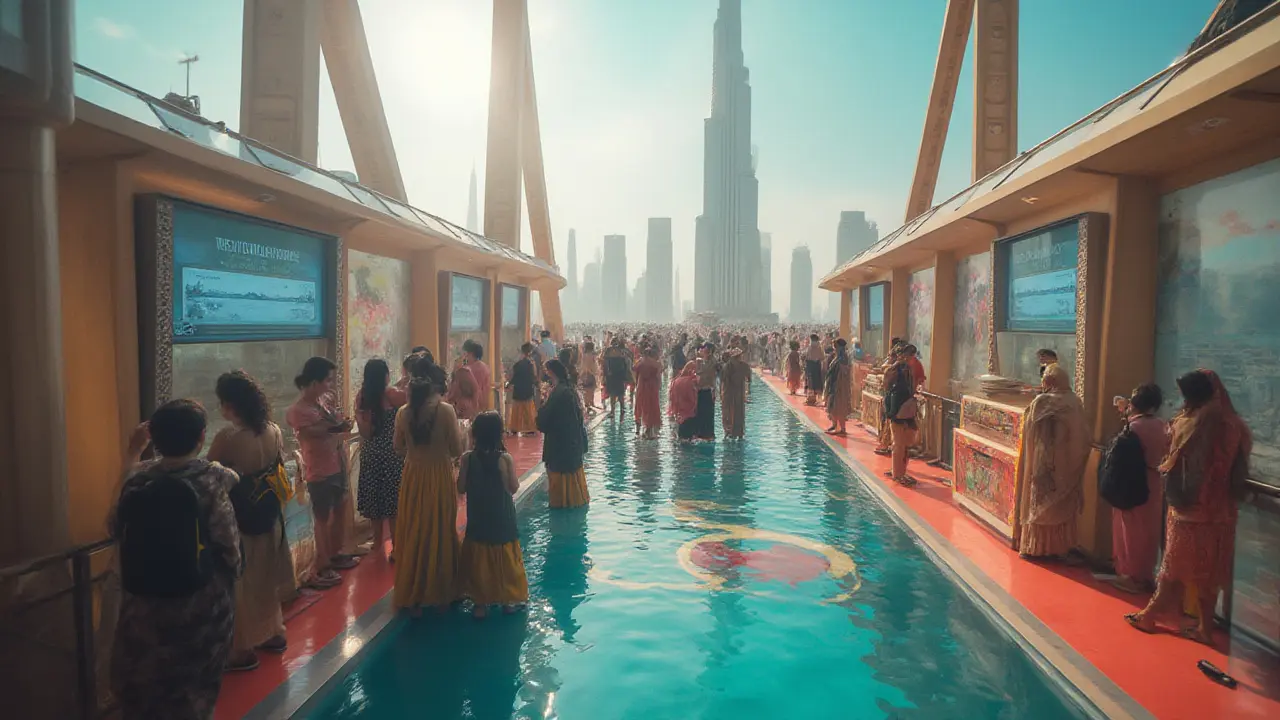
The Dubai Frame and the City’s DNA: Why It Matters to Residents
Ask locals, and the Dubai Frame isn’t just a selfie spot or a pitstop on a sightseeing tour. To people from Dubai—from long-time Emiratis to the wave of expats who’ve made this place their home—the Frame is a symbol of ambition. It literally “frames” the city’s journey, reminding you that today’s shopping malls and tech start-ups grew from the wooden abras and coral-stone homes of decades ago. Older residents remember when there were only a handful of tall buildings, and Zabeel Park itself was a dusty expanse grazed by goats.
The structure has even become embedded in the city’s identity. School trips for private and government schools alike include the Frame on must-visit lists, with projects and essays done on its significance. On weekends, joggers loop past the Frame’s shadow, dodging families picnicking under palm trees. During Ramadan, community Iftar tents sometimes spring up nearby, with people breaking fast as the Frame glows golden in the background. Even real estate listings for apartments in nearby Karama or Oud Metha casually hype “picturesque Frame views.”
Locals often flock to the landmark after sunset, when the city cools off and the crowds die down. It’s less about tourist checklists, more about catching up with friends or unwinding after a long work week. There’s a secret locals’ hack, too: parking is usually easier on the Zabeel Park side after office hours, and you’ll spot food stalls serving cardamom tea and shawarma. If you hear the distant sound of drumming, you might have stumbled onto an impromptu cultural event—part of Dubai’s habit of blending the old and new.
For entrepreneurs, the vicinity of the Dubai Frame has also become a prime location for small businesses. Nearby food trucks sell everything from Emirati chebab pancakes to bubble tea with zesty twists. Companies organizing city-wide scavenger hunts or hosting team-building days almost always use the Frame as an anchor stop. Even art installations for events like Art Dubai occasionally pop up under the landmark’s towering span.
Fast facts about Dubai Frame’s role in city life:
- Featured in more than 20 million Instagram and TikTok posts as of last year.
- Popular backdrop for Emirati wedding shoots, especially during winter.
- Official venue for light shows during key city occasions, including the Expo 2020 celebrations.
- Hosting point for community fitness challenges, including the annual Dubai Fitness Challenge walkathon.
Planning Your Visit: What to Know for an Unforgettable Experience
If you’re planning to visit—or want tips for sending friends and family—the Dubai Frame has plenty of hacks to make the day more memorable. Tickets can be bought online via the official Dubai Frame website or at the Zabeel Park ticket counters, but weekends and public holidays sell out fast, especially around Eid or during school breaks. Standard entry for adults is usually in the AED 50 range, with significant discounts for children and residents holding an Emirates ID.
When you arrive, light clothing and comfortable shoes are your best bet—between line-ups, exhibition halls, elevator rides, and wandering Zabeel Park, you’ll clock up plenty of steps. Photography is allowed everywhere (except in some museum spaces), so bring your best lens, but leave drones at home: those require special permission across Dubai’s public spaces. If you’re hoping for the famous “infinity view” shot, snag a spot on the western side of the Sky Deck at sunset. Golden hour turns the metal lattice to pure honey, and the city glows in the haze.
Hungry? While there’s a cafe at the base, the surrounding Zabeel Park boasts food kiosks and mobile truck clusters that rotate each season. You’ll find both classic Emirati treats and global flavor bombs—laksa, manakish, even vegan smoothies for the health-focused crowd. Nearby, Karama’s “Little India” district is a dinner favorite, just a five-minute drive from the Frame. After your visit, think about extending your day with a leisurely stroll toward Dubai Creek or a drive down towards DIFC for art shows at Leila Heller Gallery or late-night dessert at Project Chaiwala.
Best times to visit? Special occasions like New Year’s Eve and National Day offer light shows you won’t forget, but come prepared for big crowds and heavy traffic—ride-hailing apps like Careem or Dubai Metro’s World Trade Centre station (with a short taxi hop) beat driving yourself. Don’t forget: Zabeel Park has a nominal entry fee per person, separate from Dubai Frame tickets, and gets busy with families during winter picnic season.
For those wanting to make the outing educational, guided tours are available—great for school groups or culture buffs keen to dig into Dubai’s history. Arabic and English audio guides do a good job filling in the fascinating context, from pearl divers’ legends to Expo 2020 initiatives. If you’re a business traveler squeezing in a visit, the Frame is close enough to DIFC and Downtown Dubai to sneak in before dinner reservations or late meetings. And yes, you really can get the full tour done in about 90 minutes, without skipping the essential Instagrammable stops along the way.
So, next time you spot that geometric giant sparkling between palm trees and towers, remember: it isn’t just another Dubai attraction. The Dubai Frame is where you can literally walk through an entire city’s story—standing on the edge of yesterday, staring straight into tomorrow.

